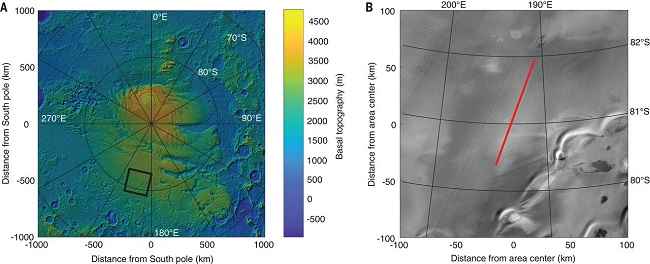Previous research has revealed signs of intermittent liquid water flowing on the red planet’s surface but this is the first time a persistent water body has been found. The discovery was made using Marsis (Mars Advanced Radar for Subsurface and Ionosphere Sounding), a radar instrument used by scientists to study the inner crusts of a planet’s surface.

Shaded relief map of Planum Australe, Mars, south of 75 deg S latitude
Professor Roberto Orosei of the Italian National Institute for Astrophysics, who led the study remarked that this newly discovered underground lake qualified as a proper body of water, unlike previous discoveries. According to him, the next step should include sending a robot probe capable of drilling through 1.5 kilometres of ice to the site for further study. This, of course, will need some technological advancements that aren’t yet available to us just yet.